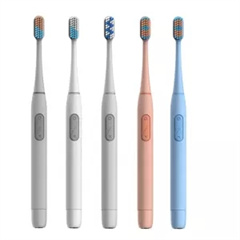Introduction: Sonic electric toothbrushes have gained popularity for their unique cleaning mechanism. In this blog post, we delve into the science behind sonic technology and how it improves oral health, backed by dental research and expert insights.
- Sonic Cleaning Action: Sonic electric toothbrushes produce rapid vibrations that create sonic waves in the brush head. These waves generate microbubbles, which reach areas beyond the bristles, effectively dislodging plaque and bacteria.
- Plaque Disruption: The high-speed vibrations of sonic toothbrushes create a dynamic cleaning effect, breaking up plaque formations and preventing their reattachment to tooth surfaces. This helps reduce the risk of cavities and gum disease.
- Gingival Massage: Sonic toothbrushes not only clean teeth but also provide a gentle massaging effect on the gums. This can improve blood circulation in the gum tissues, promoting gum health and reducing the risk of gingivitis.
- Clinical Efficacy: Numerous studies have demonstrated the clinical efficacy of sonic electric toothbrushes in comparison to manual and other electric toothbrushes. Dental professionals often recommend sonic toothbrushes for their superior cleaning performance.
- User-Friendly Experience: The gentle vibrations and advanced technology of sonic electric toothbrushes offer a comfortable and user-friendly brushing experience. Many users report that sonic toothbrushes make brushing more enjoyable, encouraging consistent oral care habits.
Conclusion: Sonic electric toothbrushes offer a scientifically proven cleaning method that enhances oral health and hygiene. The combination of sonic waves, plaque disruption, and gingival massage makes these devices a top choice for effective dental care.



















